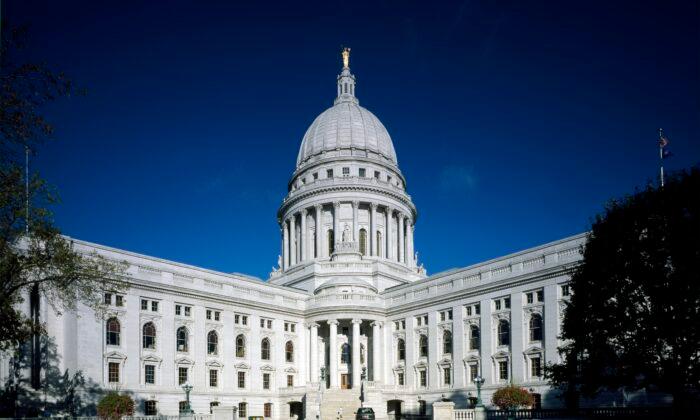A divided Wisconsin Supreme Court voted 4–3 to take up a lawsuit from Wisconsin voters over the state’s redistricting process that may lead to the court drawing up the state’s new electoral map for 2022 if the Democratic governor and Republican state legislature fail to agree on one.
Although the state legislature and the governor, currently Tony Evers, normally approve new legislative maps, some Wisconsinites fear that a divided government will lead to an impasse that will require a judicial plan for apportionment. They note that the two branches of government have repeatedly failed in recent decades to agree on new maps after new census results are released and view the lawsuit as a kind of insurance policy against the chaos that the absence of a redistricting blueprint could bring.
The U.S. Census Bureau delivered apportionment counts on Aug. 12 to President Joe Biden based upon the 2020 census, the petition states. From 2010 to 2020, Wisconsin’s population rose to 5,893,718 from 5,686,986. Because there are eight Wisconsin congressional districts, this means the ideal population of each district is 736,715. The population of the districts ranges from a low of 695,395 in the 4th Congressional District to a high of 789,393 in the 2nd Congressional District.
Republicans hold five of the state’s seats in the U.S. House of Representatives; Democrats hold three.
“The Petitioners, among many others, now live in state and/or congressional voting districts that have many more people than live in other districts and, as a result, have a diluted vote relative to the votes of others who live in less populated districts.”
WILL deputy counsel Anthony LoCoco explained why his organization brought the legal action.
With the new census results, “Wisconsin’s districts are no longer constitutionally apportioned, due to population shifts,” LoCoco told The Epoch Times.
“Some districts are overpopulated and some are underpopulated, meaning that Wisconsinites’ right to the principle of one person one vote is no longer being protected.”
LoCoco said the legal team filed in the Wisconsin Supreme Court “to vindicate our clients’ rights ... to their undiluted vote,” and “to ensure that if a court has to draw a new district map, that it'd be a state court, rather than a federal court. The United States Supreme Court has made clear that redistricting is primarily a state duty and responsibility.”
In its decision agreeing to take the case, the Wisconsin Supreme Court stated that it “has long deemed redistricting challenges a proper subject for the court’s exercise of its original jurisdiction.”
“We are mindful that judicial relief becomes appropriate in reapportionment cases only when a legislature fails to reapportion according to constitutional requisites in a timely fashion after having had an adequate opportunity to do so.”
But, the court added, in the state’s modern history, “redistricting has primarily fallen to the judiciary.”
“We have a history of letting federal courts handle these matters, perhaps because it removes us from the thicket of political conflicts. Our job, however, is not to avoid controversy but to declare the law.”
The timeline for the case isn’t yet clear, LoCoco said.
“And that’s something that we observed in our petition—we noted that the legislature and the governor should absolutely be given a chance to reach agreement on a new set of maps,” he said.
Because nomination papers have to be circulated by April 2022, “presumably, any maps would need to be in place by then so candidates know what districts they’re running for.”
A case over Wisconsin’s new electoral map is also pending in federal court, with a trial date expected in January.





